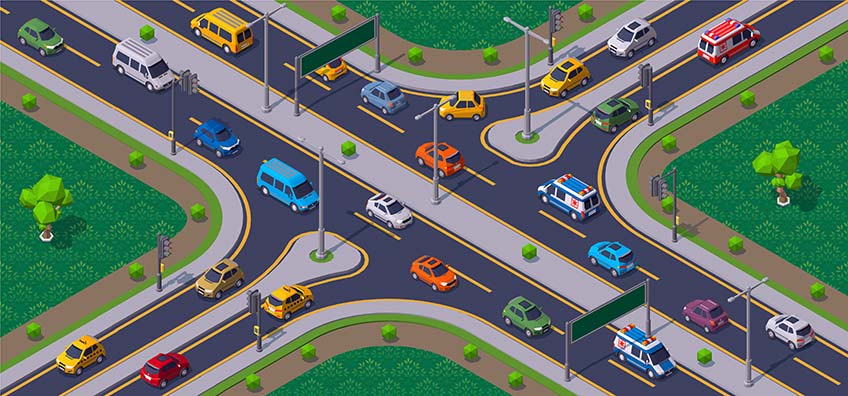NREL Study Assesses the Energy Equivalence of Transportation Safety at Intersections
Initial Results Underscore the Value of Collision-Avoidance Technologies for Benefits Beyond Safety
Researchers at the National Renewable Energy Laboratory (NREL) developed a framework for estimating the energy equivalence of transportation safety at intersections. The new framework evaluates the full economic costs of safety and their gross domestic product (GDP)-weighted energy equivalences.

“While maintaining safety is the most critical issue for any transportation system, other considerations, albeit secondary to safety, include energy use and delay,” said Stan Young, NREL advanced transportation and urban scientist. “Because nearly 50% of all car crashes occur at intersections, emerging technologies — such as connected and automated vehicles and enhanced spatial sensing at intersections — can help prevent collisions while promoting efficient traffic flow.”
Motor vehicle crashes lead to significant economic cost and societal harm, as has been abundantly documented in research going back decades. But the equivalent energy consumption of crashes and their induced impacts has not been extensively studied — until now.
An NREL study employing the framework explored the total GDP-weighted energy equivalence of all crashes on all roads in the United States as well as crashes at intersections alone. The analysis encompassed the direct consequences of crashes, such as congestion, vehicle loss, and personal injury, and the indirect impacts, such as long-term loss of human productivity and human capital.
“Results indicate that the total direct GDP-weighted energy impact of property-damage-only crashes (i.e., no injuries or fatalities) are more than three times greater than the energy impact of induced congestion alone,” Young added. “This underscores the need for a more holistic approach with respect to energy and safety, and it gives us a clearer understanding of the true value of potential safety-improvement technologies on the near horizon.”
Led by NREL Advanced Transportation Researcher Lei Zhu along with Young and Iowa State University Professor Chris Day, the study drew on 2010 traffic crash data along with energy and economic data from a variety of sources.
Researchers presented the results of the study at the Transportation Research Board’s Annual Meeting in January 2020, where they also hosted a workshop on infrastructure perception and control at intersections and the potential to enhance safety and enable automation. Visit the Transportation Research Board’s website to see the wide assortment of posters and presentations highlighting NREL work on a variety of mobility topics, including the laboratory’s leadership within the U.S. Department of Energy’s Systems and Modeling for Accelerated Research in Transportation (SMART) Mobility Laboratory Consortium. Topics ranged from automated vehicle technologies, first-mile/last-mile connectivity, and ride-sharing to electric vehicle infrastructure, megawatt-level charging stations for heavy-duty electric vehicles, employer-provided mobility, rural mobility, and transportation efficiency metrics.
Learn more about NREL’s transportation research.
Last Updated May 28, 2025
